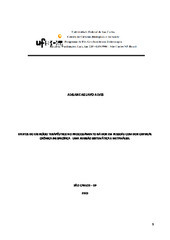Efeitos do exercício terapêutico no processamento da dor em pessoas com dor cervical crônica inespecífica: uma revisão sistemática e metanálise
Abstract
Background: Neck pain is the second leading cause of disability worldwide among musculoskeletal disorders, second only to low back pain. There is evidence that people with chronic non-specific neck pain have altered sensory processing which can explain the modest results of therapeutic exercise. Objectives: Describe the effect of therapeutic exercise on measures of pain processing in people with chronic nonspecific neck pain compared with no treatment, usual care, placebo, and other conservative treatments. Methods: The review was registered with PROSPERO (International Prospective Register of Systematic Reviews, CRD42022298811). PubMed, EMBASE, CINAHL, PEDro, SportDiscus and Cochrane Central Register of Controlled Trials (CENTRAL) were searched from inception. Two review authors performed data extraction. The PEDro (Physiotherapy Evidence Database) scale was used to assess the methodological quality of the studies. The primary outcomes were pressure pain threshold, temporal summation and conditioned pain modulation. Results: Thirteen articles were included in this review. We found a small effect size in favor of therapeutic exercises for increasing local pressure pain threshold (measured in Kg/cm2) in the medium term (MD = 0.61, [IC 95% = [0.02, 1.21], P< 0,001, I2 = 96%), and long term (MD = 0.54, [IC 95% = [0.23, 0.85], P=0.84, I2 = 0%). The certainty of evidence (GRADE) for these analyses were low or very low. Conclusion: Current literature does not show evidence that exercise has any influence in pressure pain threshold in patients with chronic nonspecific neck pain. However, the certainty of evidence for all outcomes presented in this review is low to very low, so future studies may affect the results.
Collections
The following license files are associated with this item:

